
21st Century Wire
NEW YEARS DAY SPECIAL
Looking forward into the New Year, here are but a few breaking trends to look for, as well as some predictions for the year in 2018.
In last year’s Trends and Predictions for 2017, we identified some key areas in politics, technology and international relations to look for, but as is increasingly the case these days – the pace of world-changing events is getting ever more rapid, with even more wilder twists and turns than in previous years. Undoubtedly, 2017 was THE BIG SHUFFLE, but during this coming year, we’ll begin to see the formalization of many of the break-out trends of the last 24 month.
As last year’s trends and power shifts begin to crystalize, the world will continue to undergo yet another radical geopolitical transformation.
This year we’re focusing mainly on geopolitical movements, and we’ve identified a few things on the horizon. So here’s the good, the bad, and the ugly for 2018…
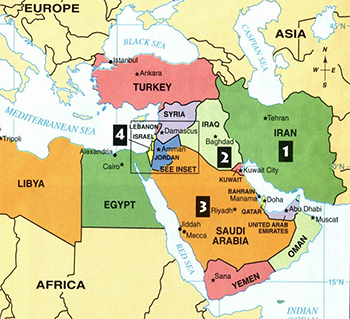 Another Geopolitical Reshuffle – Last year, at the closing of 2016, we described how a major geopolitical realignment would overtake the United States which seemed hopelessly stuck in an ever-diminishing John Boltonesque ‘New American Century’ death spiral. The ascendancy of President Donald Trump brought with it some faint hopes from paleoconservatives and libertarians alike, who read his campaign rhetoric as a positive indication that the US could switch directions from Obama’s New Cold War, to improving East-West relations and the real possibility of détente with Russia, as well as bilateral cooperation in areas like Syria and Ukraine. Those hopes were quickly dashed after Washington’s Never Trump “Resistance” and US Deep State and NATO hawks in Brussels – all made sure this wasn’t going to happen anytime soon. Neoconservatives and their mainstream media operatives continued to ramp-up their official Russian conspiracy theories, stoking irrational fears in the west of potential threats from Russia, Iran, China and North Korea. While Trump hasn’t necessarily started any new wars, he did force the Middle East on a knife-edge with his announcement before Christmas that the US will be moving its embassy to East Jerusalem, and by default, Washington will now officially recognize Jerusalem as the capital of the Zionist entity commonly known as Israel. In addition to this, the defeat of ISIS in Iraq and Syria, combined with Saudi Arabian meddling in Lebanese affairs and threatening everyone from Doha to Damascus – has helped draw together a potentially powerful new alliance of Iran, Iraq, Syria and Lebanon – as a potentially powerful resistance bloc to counter the dangerous US-backed double-headed rogue axis of Saudi Arabia and Israel. As the geopolitical center of gravity continues to shift away from Western Europe and towards Eurasia, old western-aligned power blocs will find it increasingly difficult to keep pace with the speed of developments east of the Bosphorus. As a result of this, Russia – fresh off its military victory over ISIS and US-backed proxy terrorists in Syria – has entered the Middle East as a bona fide major power broker – leaving Washington in the lurch…
Another Geopolitical Reshuffle – Last year, at the closing of 2016, we described how a major geopolitical realignment would overtake the United States which seemed hopelessly stuck in an ever-diminishing John Boltonesque ‘New American Century’ death spiral. The ascendancy of President Donald Trump brought with it some faint hopes from paleoconservatives and libertarians alike, who read his campaign rhetoric as a positive indication that the US could switch directions from Obama’s New Cold War, to improving East-West relations and the real possibility of détente with Russia, as well as bilateral cooperation in areas like Syria and Ukraine. Those hopes were quickly dashed after Washington’s Never Trump “Resistance” and US Deep State and NATO hawks in Brussels – all made sure this wasn’t going to happen anytime soon. Neoconservatives and their mainstream media operatives continued to ramp-up their official Russian conspiracy theories, stoking irrational fears in the west of potential threats from Russia, Iran, China and North Korea. While Trump hasn’t necessarily started any new wars, he did force the Middle East on a knife-edge with his announcement before Christmas that the US will be moving its embassy to East Jerusalem, and by default, Washington will now officially recognize Jerusalem as the capital of the Zionist entity commonly known as Israel. In addition to this, the defeat of ISIS in Iraq and Syria, combined with Saudi Arabian meddling in Lebanese affairs and threatening everyone from Doha to Damascus – has helped draw together a potentially powerful new alliance of Iran, Iraq, Syria and Lebanon – as a potentially powerful resistance bloc to counter the dangerous US-backed double-headed rogue axis of Saudi Arabia and Israel. As the geopolitical center of gravity continues to shift away from Western Europe and towards Eurasia, old western-aligned power blocs will find it increasingly difficult to keep pace with the speed of developments east of the Bosphorus. As a result of this, Russia – fresh off its military victory over ISIS and US-backed proxy terrorists in Syria – has entered the Middle East as a bona fide major power broker – leaving Washington in the lurch…

Putin: In the Cat Bird Seat.
The Year of the Bear – 2018 will no doubt be a big year for Russia, but not without its challenges. The next 12 months will see two important back-to-back events. First, Russia’s incumbent president, Vladimir Putin, will seek re-election for his second consecutive term as the country’s chief executive. Already the polls are looking strong for Vlad, but many anti-Russia US operatives including John McCain and George Soros are currently preparing to exploit any opportunity to stoke political and social unrest anywhere in Russia. Expect the Western media to run non-stop hit-pieces about how Putin has stolen power, as CNN prepares to spin its usual set of talking points on heavy rotation: “Putin’s election fraud”, “Putin’s voter suppression”, “Putin thugs intimidate opposition polls,” and so on. Following the election, Putin will then preside over the world’s premier international sporting bonanza – the 2018 Football World Cup (that’s soccer for Americans). For the last 8 years, the US and UK have been trying to derail Russia’s World Cup bid, as well as its international sports in general through fabricated doping scandals and other politicized attacks designed to mitigate Russia’s stature in the international arena. Expect the Western propaganda to intensify in the run-up to this summer’s World Cup, with CNN, the BBC and others rolling out the following negative PR program designed to demonize Russia and scare supporters from attending this important sporting extravaganza: “Safety fears ahead of World Cup,” and “Terror threats mire Russia’s World Cup preparations”, followed by, “Russia’s brutal repression of gays and LGBT draws protests ahead of Cup” and “England fans may be refused entry to World Cup”. Look for “Hooligan violence expected to be worst ever at this summer’s World Cup,” followed by the ramshackle ramblings of CNN’s unhinged Russian expert excommunicato Gary Kasparov. Since entering the Syrian Conflict in 2015 (legally, unlike the US) Russia was crucial in turning the tide in Syria’s War on Terror, and helped to drive ISIS from the Levant. The world marveled at this rare sight: a military superpower who actually did what it said it would do, and in accordance with international law. This elevated Russia onto another level internationally. Meanwhile, after 4 years of US and EU sanctions against Russia, the country’s inflation rate has stabilized at around 2.5% and with an annual GDP growth of between 2 and 3% – with both numbers in line with Europe and the US. In addition, because of sanctions, Russia’s agricultural industry has exploded, now comprising around 13% of the country’s GDP, gaining fast on Oil and Gas which is 18% of the economy. Russia is also self-sufficient in food production, and is the world’s new number one grain exporter. Not bad for being under a raft of Western sanctions for the last 4 years. This along with many other factors, like the North Stream Pipeline being on schedule to deliver Russian gas to Europe – is all proof positive that Washington and Brussels have failed miserably so far in their plan to cripple the Russian economy in the hopes of triggering a Saakashvilli-style color revolution in Moscow. Dream on George, dream on. And by the way, Crimea will not be returning to Ukraine.
 The North Korean Threat – Before the New Year, DPRK leader Kim Jung Un announced that his country had finalized the remaining outstanding components needed for its functioning nuclear deterrent Depending on which way you look at this, it could either mean peace and stability for the region, or it could be a prelude to a major war – pitting a bellicose US Administration against what CNN affectionately calls “the Hermit Kingdom.” What Kim actually has in terms of operational nukes, or even an ICBM delivery system is anyone’s guess. One thing is absolutely certain though: US desperately needs an enemy on the Pacific front to justify its military occupation of Japan and South Korea, but also in order to justify its climbing defense” budget, now topping $700 billion per year – and expected to rise to over $1 trillion by next year. North Korea is much more profitable to the US with its military industry as a “threat”, than it is as a non-threat. The real target however, is China, and as the US cannot directly confront China militarily without putting its bilateral trade and investment relationships at risk, North Korea will remain Washington’s primary bogey man along the Pacific Rim. In 2018, expect the rhetoric, and the threats, between North Korea and the US to continue – until such a time when Trump calculates a political opportunity in pursuing more peaceful lines of diplomacy – like in the run-up to US mid-term elections, or to secure a “win” in his pocket for a 2020 re-election run.
The North Korean Threat – Before the New Year, DPRK leader Kim Jung Un announced that his country had finalized the remaining outstanding components needed for its functioning nuclear deterrent Depending on which way you look at this, it could either mean peace and stability for the region, or it could be a prelude to a major war – pitting a bellicose US Administration against what CNN affectionately calls “the Hermit Kingdom.” What Kim actually has in terms of operational nukes, or even an ICBM delivery system is anyone’s guess. One thing is absolutely certain though: US desperately needs an enemy on the Pacific front to justify its military occupation of Japan and South Korea, but also in order to justify its climbing defense” budget, now topping $700 billion per year – and expected to rise to over $1 trillion by next year. North Korea is much more profitable to the US with its military industry as a “threat”, than it is as a non-threat. The real target however, is China, and as the US cannot directly confront China militarily without putting its bilateral trade and investment relationships at risk, North Korea will remain Washington’s primary bogey man along the Pacific Rim. In 2018, expect the rhetoric, and the threats, between North Korea and the US to continue – until such a time when Trump calculates a political opportunity in pursuing more peaceful lines of diplomacy – like in the run-up to US mid-term elections, or to secure a “win” in his pocket for a 2020 re-election run.
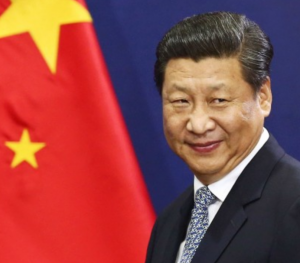
Xi: China’s new Philosopher King.
China’s One Belt One Road – Without a doubt, the future of trade in Asia, and indeed the Middle East, Europe, Africa – and even for North, South and Central America – will depend heavily on what becomes of China’s expansive One Belt, One Road Initiative. Already, it’s emerging as the number one paradigm-busting geopolitical event and will be the world’s largest-ever coordinated single nation infrastructure project, but one that’s hardly getting a mention in US media – which should indicate just how scared US elites are at present. What Washington, London and Brussels should be worried about is that economic power translates into geopolitical power, as evidenced by Chinese President Xi Jinping‘s recent New Years message in which he stated that “China will have a say” on all major international issues, while it actively pushes its Belt and Road project. For the last decade, China has been seeing steady economic growth, and has built up high gold reserves, but also risks rising levels of corporate debt, as well as some residential and commercial property bubble risks. Nonetheless, it is still preparing for the next growth wave in Chinese exports resulting from the launch of the One Belt One Road. Russia also stands to benefit greatly from China’s transcontinental ambitions – another reason why Moscow may be looking past the archaic sanctions being leveled by US and EU. This wave is already rolling, and no matter how many proxy wars and ‘ISIS sightings’ the US can muster in places like Pakistan, Thailand or Myanmar, they may slow it down, but in the end they will not be able to stop the One Belt and One Road – which looks to reposition China firmly at the top of the international hierarchy.
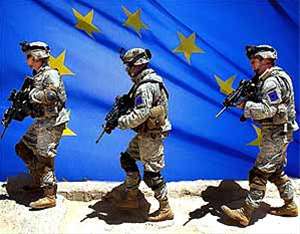 EU Military Unification – FACT: The majority of EU nations have now committed to a joint defense cooperation. Brexit provided the impetus to fast tract the final PESCO framework. EU foreign policy chief Federica Mogherini described the signing of PESCO as a “historic moment in European defense.” This has been going on quietly under the radar for years, and in 2017 it was finally brought into daylight, although the mainstream media seem to have been under strict instructions not to talk about it – even as the ribbon-cutting ceremony was happening in Brussels. In truth, Military Unification has been the EU’s policy for decades. To quote one commentator, “European Union Defence plans are associated with the eventual formation of a European Federal State. Under the current system of unaccountable governance, this means they will be run by an unelected oligarchy. A nation-state that contracts out its defence has ceased to be.” This will allow the EU to project power globally in the same way the US does – and with all the development and ‘outreach’ bells and whistles – and ‘generous’ reconstruction loans from European Central banks. Get the picture? Sound familiar? Make no mistake – this is happening and it will radically transform geopolitics in Europe, Eurasia, Africa and even in the UN Security Council… should the EU be given a permanent seat at the head cartel table. How will Russia and China react to this new military superpower? And then what happens to France, or the UK? Will French and UK nukes be under the command of those formerly sovereign nations, or will they be Brussels’ nukes? The media are not asking any of these questions.
EU Military Unification – FACT: The majority of EU nations have now committed to a joint defense cooperation. Brexit provided the impetus to fast tract the final PESCO framework. EU foreign policy chief Federica Mogherini described the signing of PESCO as a “historic moment in European defense.” This has been going on quietly under the radar for years, and in 2017 it was finally brought into daylight, although the mainstream media seem to have been under strict instructions not to talk about it – even as the ribbon-cutting ceremony was happening in Brussels. In truth, Military Unification has been the EU’s policy for decades. To quote one commentator, “European Union Defence plans are associated with the eventual formation of a European Federal State. Under the current system of unaccountable governance, this means they will be run by an unelected oligarchy. A nation-state that contracts out its defence has ceased to be.” This will allow the EU to project power globally in the same way the US does – and with all the development and ‘outreach’ bells and whistles – and ‘generous’ reconstruction loans from European Central banks. Get the picture? Sound familiar? Make no mistake – this is happening and it will radically transform geopolitics in Europe, Eurasia, Africa and even in the UN Security Council… should the EU be given a permanent seat at the head cartel table. How will Russia and China react to this new military superpower? And then what happens to France, or the UK? Will French and UK nukes be under the command of those formerly sovereign nations, or will they be Brussels’ nukes? The media are not asking any of these questions.
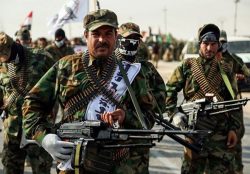 A New Anti-Zionist Middle Eastern Alliance – As mentioned previously, the defeat of ISIS in Iraq and Syria, combined with Saudi Arabian meddling in Lebanese affairs – has helped draw together a potentially powerful new alliance of Iran, Iraq, Syria and Lebanon – as potential opposition to the US-backed axis of Saudi Arabia and Israel. While relationships between Iran, Iraq, Syria and Lebanon have always been promising and buttressed by many common interests and shared religious and moral concerns (like the liberation of Palestine), the real wild card in this equation came at the onset of the ISIS crisis in June 2014. Iraq formed the Shia-led, but multi-ethnic and multi-denominational 120,000 person-strong People’s Mobilization Units (PMU), aka the Hash’d al-Shaabi – placed under the command of the Iraq Armed Forces, and with substantial backing and support from Iran. Not only did the PMUs help restore order to country, but Iran’s help and cooperation in Iraq’s hour of need effectively put to rest decades of complicated diplomacy which originally stemmed from a US-orchestrated bloody Eight Year War (1980-1988) between an Iraqi Army led by Saddam Hussein and a fledgling revolutionary government in Iran. This new development, coupled with the defeat of Western and Gulf-backed terrorist proxies in Syria, has definitely frustrated the US-UK-Saudi-Israel anti-Iran Axis to no end. It has also tipped the balance of power in Iraq away from its former occupiers, the United States, and it has also stalled the US-Israeli nation-building project in Iraq Kurdistan. By resolving three key regional obstacles to achieving a wider Arab national and Iranian alliance, US-led hegemony in the Middle East has been severely weakened, and may never recover as a result. Welcome to the New Middle East…
A New Anti-Zionist Middle Eastern Alliance – As mentioned previously, the defeat of ISIS in Iraq and Syria, combined with Saudi Arabian meddling in Lebanese affairs – has helped draw together a potentially powerful new alliance of Iran, Iraq, Syria and Lebanon – as potential opposition to the US-backed axis of Saudi Arabia and Israel. While relationships between Iran, Iraq, Syria and Lebanon have always been promising and buttressed by many common interests and shared religious and moral concerns (like the liberation of Palestine), the real wild card in this equation came at the onset of the ISIS crisis in June 2014. Iraq formed the Shia-led, but multi-ethnic and multi-denominational 120,000 person-strong People’s Mobilization Units (PMU), aka the Hash’d al-Shaabi – placed under the command of the Iraq Armed Forces, and with substantial backing and support from Iran. Not only did the PMUs help restore order to country, but Iran’s help and cooperation in Iraq’s hour of need effectively put to rest decades of complicated diplomacy which originally stemmed from a US-orchestrated bloody Eight Year War (1980-1988) between an Iraqi Army led by Saddam Hussein and a fledgling revolutionary government in Iran. This new development, coupled with the defeat of Western and Gulf-backed terrorist proxies in Syria, has definitely frustrated the US-UK-Saudi-Israel anti-Iran Axis to no end. It has also tipped the balance of power in Iraq away from its former occupiers, the United States, and it has also stalled the US-Israeli nation-building project in Iraq Kurdistan. By resolving three key regional obstacles to achieving a wider Arab national and Iranian alliance, US-led hegemony in the Middle East has been severely weakened, and may never recover as a result. Welcome to the New Middle East…
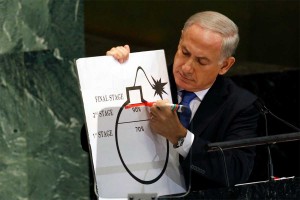 The Israeli ‘Mad Dog’ Option – This new reality in the Middle East, along with the fact that Syria and ISIS are no longer dominating world headlines for Middle East news – leaves the US protectorate of Israel extremely exposed, and will presumably make it more difficult for the Zionist entity illegally occupying Palestine to act with impunity and against all international law as it has become accustomed to over the past decades. Israel’s tantrum at the UN before Christmas demonstrated that it still considers itself to be above any international law, and will run to the US for support even in the face of rounded international condemnation for its serial war crimes and human rights violations. Also, the crucial role played by the Lebanese defense force Hezbollah in the victory over ISIS and Al Nusra (al Qaeda) in Syria has worried planners in Tel Aviv who now view Hezbollah as a bonafide regional actor now. What scares Tel Aviv is the fact that Iran and Hezbollah stand firmly in support of liberating the native Arab Palestinian population who are effectively being held captive in what constitutes the world’s largest open prison in occupied Palestine – administered by a brutal, US-backed apartheid regime in Tel Aviv. This only compounds Israel’s own sense of insecurity which was dealt a devastating blow following its humiliating loss to Hezbollah in 2006 when the IDF were kicked out of South Lebanon permanently. As a result, look for increasingly more desperate moves and brash threats by the radical ethno-nationalist Likud government led by its “President for Life”, Israeli Prime Minister Benjamin Netanyahu. In the past, Israeli leaders have employed the “mad dog option” – in effect threatening or blackmailing the US so it would support its dangerous designs in the region, even if these were against US national interests. Based on academic psychological profiling, Netanyahu has been shown to have psychopathic behavioral traits, so the mad dog option is certainly possible should this rogue state be faced with a situation where they might have to concede any of the territory it has stolen and occupied since its original terrorist and ethnic cleansing campaign begun in 1948. This, and the fact that Israel is still harboring its own undeclared nuclear arsenal, means that it will continue to threaten Iran with a pre-emptive strike – even though Iran has no nuclear warheads, and unlike the Israeli regime, Iran is a signatory to the Nuclear Non-proliferation Treaty. In part, Netanyahu’s strategy of fabricating an Iranian threat is necessary for keeping Jewish Israelis sufficiently scared so as to maintain Israel’s 24/7 militarized police state – which also helps his party to stay in power under the guise of a “permanent state of emergency.” One ray of hope: some Jewish Israelis are now coming to realize the shear level of corruption in their own Zionist government and are beginning to take to the streets in protest. Will dissenters in Israel be bold enough to challenge and call for an end to decades of brutal apartheid, racist rule by Tel Aviv? Eventually every wall falls down, and it’s only a question of time before Israel’s does too.
The Israeli ‘Mad Dog’ Option – This new reality in the Middle East, along with the fact that Syria and ISIS are no longer dominating world headlines for Middle East news – leaves the US protectorate of Israel extremely exposed, and will presumably make it more difficult for the Zionist entity illegally occupying Palestine to act with impunity and against all international law as it has become accustomed to over the past decades. Israel’s tantrum at the UN before Christmas demonstrated that it still considers itself to be above any international law, and will run to the US for support even in the face of rounded international condemnation for its serial war crimes and human rights violations. Also, the crucial role played by the Lebanese defense force Hezbollah in the victory over ISIS and Al Nusra (al Qaeda) in Syria has worried planners in Tel Aviv who now view Hezbollah as a bonafide regional actor now. What scares Tel Aviv is the fact that Iran and Hezbollah stand firmly in support of liberating the native Arab Palestinian population who are effectively being held captive in what constitutes the world’s largest open prison in occupied Palestine – administered by a brutal, US-backed apartheid regime in Tel Aviv. This only compounds Israel’s own sense of insecurity which was dealt a devastating blow following its humiliating loss to Hezbollah in 2006 when the IDF were kicked out of South Lebanon permanently. As a result, look for increasingly more desperate moves and brash threats by the radical ethno-nationalist Likud government led by its “President for Life”, Israeli Prime Minister Benjamin Netanyahu. In the past, Israeli leaders have employed the “mad dog option” – in effect threatening or blackmailing the US so it would support its dangerous designs in the region, even if these were against US national interests. Based on academic psychological profiling, Netanyahu has been shown to have psychopathic behavioral traits, so the mad dog option is certainly possible should this rogue state be faced with a situation where they might have to concede any of the territory it has stolen and occupied since its original terrorist and ethnic cleansing campaign begun in 1948. This, and the fact that Israel is still harboring its own undeclared nuclear arsenal, means that it will continue to threaten Iran with a pre-emptive strike – even though Iran has no nuclear warheads, and unlike the Israeli regime, Iran is a signatory to the Nuclear Non-proliferation Treaty. In part, Netanyahu’s strategy of fabricating an Iranian threat is necessary for keeping Jewish Israelis sufficiently scared so as to maintain Israel’s 24/7 militarized police state – which also helps his party to stay in power under the guise of a “permanent state of emergency.” One ray of hope: some Jewish Israelis are now coming to realize the shear level of corruption in their own Zionist government and are beginning to take to the streets in protest. Will dissenters in Israel be bold enough to challenge and call for an end to decades of brutal apartheid, racist rule by Tel Aviv? Eventually every wall falls down, and it’s only a question of time before Israel’s does too.
 One State Solution? – Ever since US Secretary of State John Kerry’s utter failure in moving forward with the Israel-Palestine ‘peace process’ in 2014, many began to seriously question the so-called “Two-State Solution” framework which was floated by the US before the eventual failure of the deeply flawed Oslo Accords process which began back in 1992. During the 25 years of ‘negotiations’ the occupying Zionist government in Tel Aviv used the peace process as convenient cover to gradually increase the number of illegal Jewish settlers in the Gaza Strip, the West Bank, and East Jerusalem – which increased from approximately 193,000 to well over 600,000 today. This tactic of building illegal settlements was pioneered under the late Ariel Sharon, whose policy of creating “facts on the ground” was adopted as internal policy for Israel’s colonial compartment strategy of illegal expansion – designed to shrink what is left of ‘Palestine’ as it’s represented on a contemporary map. As a result of this, many have declared that the Two State Solution is dead. There is also a general recognition by realists that in any ‘Two State’ arrangement, Israel has no intention of ever giving the native Palestinian population any control over its water supply, electricity, telecommunications, its air traffic, its coastal territory, and any freedom of movement between Israeli-occupied Gaza, the West Bank and East Jerusalem. As a result, many Palestinian advocates are now talking about the very real option of a One State Solution. This would mean One State which would constitute a multi-ethnic, secular state which would include all Jews, along with all Arabs, Bedouins, including the Muslim and Christian populations – all with equal rights under one law, and the rights of Palestinian refugees to return. In short, whoever wants to stay can stay, and who ever wants to leave can leave. Even some traditionally pro-Zionist US mainstream media outlets have broken ranks and are giving this discussion some serious consideration. While this might be the only practical solution to ending 70 years of brutal Israeli military occupation, ethnic cleansing and a race-based apartheid system, it’s something that hard-line Zionists and fanatical religious fundamentalist Jewish settlers would likely take up arms to prevent from happening. In 2018, expect to hear more prominent academics and political voices discuss the possibility of a One State Solution. How the pro-Israeli Trump Administration would react to mass public support for a One State Solution remains to be seen.
One State Solution? – Ever since US Secretary of State John Kerry’s utter failure in moving forward with the Israel-Palestine ‘peace process’ in 2014, many began to seriously question the so-called “Two-State Solution” framework which was floated by the US before the eventual failure of the deeply flawed Oslo Accords process which began back in 1992. During the 25 years of ‘negotiations’ the occupying Zionist government in Tel Aviv used the peace process as convenient cover to gradually increase the number of illegal Jewish settlers in the Gaza Strip, the West Bank, and East Jerusalem – which increased from approximately 193,000 to well over 600,000 today. This tactic of building illegal settlements was pioneered under the late Ariel Sharon, whose policy of creating “facts on the ground” was adopted as internal policy for Israel’s colonial compartment strategy of illegal expansion – designed to shrink what is left of ‘Palestine’ as it’s represented on a contemporary map. As a result of this, many have declared that the Two State Solution is dead. There is also a general recognition by realists that in any ‘Two State’ arrangement, Israel has no intention of ever giving the native Palestinian population any control over its water supply, electricity, telecommunications, its air traffic, its coastal territory, and any freedom of movement between Israeli-occupied Gaza, the West Bank and East Jerusalem. As a result, many Palestinian advocates are now talking about the very real option of a One State Solution. This would mean One State which would constitute a multi-ethnic, secular state which would include all Jews, along with all Arabs, Bedouins, including the Muslim and Christian populations – all with equal rights under one law, and the rights of Palestinian refugees to return. In short, whoever wants to stay can stay, and who ever wants to leave can leave. Even some traditionally pro-Zionist US mainstream media outlets have broken ranks and are giving this discussion some serious consideration. While this might be the only practical solution to ending 70 years of brutal Israeli military occupation, ethnic cleansing and a race-based apartheid system, it’s something that hard-line Zionists and fanatical religious fundamentalist Jewish settlers would likely take up arms to prevent from happening. In 2018, expect to hear more prominent academics and political voices discuss the possibility of a One State Solution. How the pro-Israeli Trump Administration would react to mass public support for a One State Solution remains to be seen.
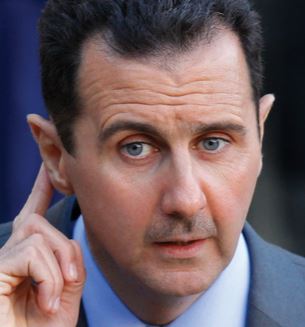 Assad Must Stay – Not a week goes by that you don’t hear another world leader announcing with a high degree of righteous indignation that, “Assad must go!” Nearly every world leader who has said this over the last 7 years has ended up ‘going’ themselves… while Syrian President Bashar al-Assad still stays in the same chair he occupied before the NATO member Gulf states waged their proxy war against Syria. The condemnations are routine by now, including flippant statements from Turkey’s Erdogan, US Sec. of State Tillerson and France’s Macron. Unfortunately for the enemies of Syria, the Syrian Arab Army’s victory over ISIS and other “moderate” rebel terrorists is already in the record books – a fact which neither the BBC, CNN or The Guardian can change. Still, that doesn’t stop the western propaganda script from being recycled, “… but Assad is a tyrant, he’s a brutal dictator – he’s killing his own people!” – and that’s the world according Human Rights Watch and Amnesty International, Barack Obama and Hillary Clinton. Sane and sober people have since come to realize that this war was imposed on Syria and by foreign-backed “rebels” (exclusively extremist Salafist militant fanatics) who have been trained, armed and paid by US, UK and EU tax dollars, pounds and euros. That’s a fact. Another fact: Assad is the most popular man in Syria. So if he’s the most popular man in Syria, then does that mean the Syrian population are all “war crime deniers”, or are we in the West simply victims of our own media brainwashing? We believe its it’s the latter.
Assad Must Stay – Not a week goes by that you don’t hear another world leader announcing with a high degree of righteous indignation that, “Assad must go!” Nearly every world leader who has said this over the last 7 years has ended up ‘going’ themselves… while Syrian President Bashar al-Assad still stays in the same chair he occupied before the NATO member Gulf states waged their proxy war against Syria. The condemnations are routine by now, including flippant statements from Turkey’s Erdogan, US Sec. of State Tillerson and France’s Macron. Unfortunately for the enemies of Syria, the Syrian Arab Army’s victory over ISIS and other “moderate” rebel terrorists is already in the record books – a fact which neither the BBC, CNN or The Guardian can change. Still, that doesn’t stop the western propaganda script from being recycled, “… but Assad is a tyrant, he’s a brutal dictator – he’s killing his own people!” – and that’s the world according Human Rights Watch and Amnesty International, Barack Obama and Hillary Clinton. Sane and sober people have since come to realize that this war was imposed on Syria and by foreign-backed “rebels” (exclusively extremist Salafist militant fanatics) who have been trained, armed and paid by US, UK and EU tax dollars, pounds and euros. That’s a fact. Another fact: Assad is the most popular man in Syria. So if he’s the most popular man in Syria, then does that mean the Syrian population are all “war crime deniers”, or are we in the West simply victims of our own media brainwashing? We believe its it’s the latter.
 Hyper Active Sanctions – One thing the new Trump Administration has excelled at is slapping sanctions on states the US would like to see implode economically to pave the way for regime change. As direct western military interventions become ever-less palatable, and as the western proxy war model of destroying countries (like in Syria, Iraq, Libya and Yemen) by backing insurgents and terrorists becomes evermore exposed in the public eye – the only really viable weapon of war the US and its “coalition” allies have is economic warfare through imposing punitive sanctions. This method has the added benefit of imposing a collective punishment on the population of a target country, which is effective in triggering migrant and refugee flows, as well at causing mass unemployment, promoting black markets, militia and terrorist recruitment, organized crime and hyper-inflation as a result of decreased access to liquid capital, and severe shortages of essential goods and services. Washington sees this as a winning formula in Syria, where they have been able to effectively destroy the country’s economy and fracture its society – all without having to directly attack the country and its government in the way it did to Iraq, Afghanistan, and Libya. Currently, the US is running various forms of punitive sanctions and blockades against Syria, Russia, Yemen, Venezuela, and Iran. In the case of Iran, the neoconservative-dominated Trump White House ignored the terms of the international JCPOA Iran nuclear treaty and imposed new sanctions on Iran via executive order. Despite the fact that the US and the EU have failed to seriously derail the Russian economy, it has still moved forward with more sanctions. This might be one of the chief reasons behind the western establishment and mainstream media’s 18 month-long “Russia-gate” hoax – to justify the continued renewal of sanctions against Moscow.
Hyper Active Sanctions – One thing the new Trump Administration has excelled at is slapping sanctions on states the US would like to see implode economically to pave the way for regime change. As direct western military interventions become ever-less palatable, and as the western proxy war model of destroying countries (like in Syria, Iraq, Libya and Yemen) by backing insurgents and terrorists becomes evermore exposed in the public eye – the only really viable weapon of war the US and its “coalition” allies have is economic warfare through imposing punitive sanctions. This method has the added benefit of imposing a collective punishment on the population of a target country, which is effective in triggering migrant and refugee flows, as well at causing mass unemployment, promoting black markets, militia and terrorist recruitment, organized crime and hyper-inflation as a result of decreased access to liquid capital, and severe shortages of essential goods and services. Washington sees this as a winning formula in Syria, where they have been able to effectively destroy the country’s economy and fracture its society – all without having to directly attack the country and its government in the way it did to Iraq, Afghanistan, and Libya. Currently, the US is running various forms of punitive sanctions and blockades against Syria, Russia, Yemen, Venezuela, and Iran. In the case of Iran, the neoconservative-dominated Trump White House ignored the terms of the international JCPOA Iran nuclear treaty and imposed new sanctions on Iran via executive order. Despite the fact that the US and the EU have failed to seriously derail the Russian economy, it has still moved forward with more sanctions. This might be one of the chief reasons behind the western establishment and mainstream media’s 18 month-long “Russia-gate” hoax – to justify the continued renewal of sanctions against Moscow.
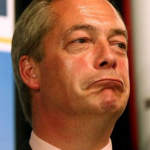
Relegated to TV mascot.
BREXIT? What BREXIT? – Last year, we said that in 12 months time, Britain will be no closer to a real BREXIT than they were in 2016. We also said to look to a deceptive-minded Tory government and the mainstream to try and confuse and ultimately paralyze the public on the issue. As it turns out, we were right on all fronts. The bait and switch here, is that under the cover of “BREXIT Negotiations”, Theresa May has been busy behind the scenes bringing the UK even closer to Brussels than ever before. Adding to this, Britain is now fully compliant with the new European Military Unification framework – a move when finally implemented, will effectively transfer the sovereign command over the British Armed Forces (and the country, by default) to an EU Military structure laid out in the new PESCO framework. Meanwhile, the showboating former UKIP leader, Nigel Farage, has finally admitted he fears that Britain may never leave the EU. Readers should know that from the onset, both 21WIRE and the UK Column have been right about BREXIT, whereas the entire mainstream media has been wrong. Still, we shall see which way it’s heading in 2018.
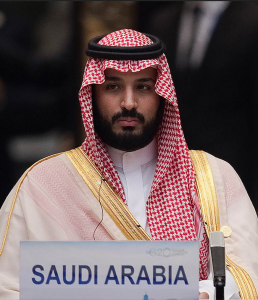
MBS: ‘I want it all, and I want it now.’
Saudi in Crisis – Back in June, Mohammed bin Nayef, a powerful figure in Saudi Arabia’s security apparatus for the past two decades and the next in line to the throne, was summoned to meet King Salman bin Abdulaziz – only to be subdued by an ambitious 32 year old Prince Mohammed bin Salman (MBS), who then installed himself as heir to the throne. Then in November, the young Crowned Prince arrested scores of the country’s most prominent officials and business elites under the banner of “anti-corruption”. He also kidnapped Lebanese Prime Minister Saad Hariri, before eventually letting him leave Riyadh. But these brash moves, coupled with Saudi Arabia’s brutal genocide taking place in neighboring Yemen – have put the Kingdom in a precarious position, potentially labeling it as an international pariah state. Everything MBS has put his hands on has ended in turmoil or failure – as he simultaneously attempts to “modernize” the backward feudal state, and to “moderate” the country’s radical brand of Islam – which will surely put him at odds with the country’s throw-back Wahhabi clerics. Do not be surprised to see a revolt against MBS, and when that happens you can be sure the US and UK Deep State will be right there to install its preferred model of choice – and further consolidate western influence over key oil monarchy and regional power player.

Saakashvilli has found a new mark in Kiev.
More US-backed Color Revolutions – In the last days of 2017, a smattering of US-Saudi-Israel-backed protests kicked off in Iran, which has been enthusiastically reported by Pentagon-linked propaganda media outlet CNN. It was a combination of some legitimate economic protests by residents, but as is usually the case with uprisings in target nations – genuine protests were infiltrated by agent provocateurs who started setting fire to government buildings and attacking religious institutions. Whether the US and its partners can gin-up such street agitation and leverage it into a full-on Color Revolution and subsequent regime change – remains to be seen. One thing is clear: the appetite for US-backed faux ‘revolutions’ has waned considerably in the two years, mainly because people and governments are now aware of who is engineering the political unrest, namely the US government and its ‘Democracy NGOs’ and other George Soros ‘civil society’ organizations. Certainly in the Middle East, the color revolution game is finished for the time being, as people are aware that the US and its allies are willing partners with radical Islamist terrorist groups in order to achieve regime change. The world has seen its disastrous results in countries like Syria, Libya and even in Ukraine (with the US backing of violent fascist street gangs and Far Right political mobs). This won’t stop the US however, as new target lists are being drawn up by the department for regime change based in Langley, Virginia. The US will either use the color revolution method, or they will seek ‘change’ through the stoking of artificial ‘unrest’ designed to destabilize the political structures of the country. Look for possible unrest in key NATO footholds like Macedonia, and also for the CIA to try and overthrow its own puppet in Ukraine, President Poreshenko, possibly in favour of likely CIA asset and John McCain’s personal protégé, ex-Georgian President and now corporate-Trotskyite carpetbagger extraordinaire, Mikhail Saakashvili. Other prime CIA target nations are Venezuela, Brazil, Mexico, Argentine, Nicaragua, El Salvador and, of course, the eternal CIA regime change project, Cuba. 2018 will be a busy year for the CIA and George Soros – as they cling to the old order.
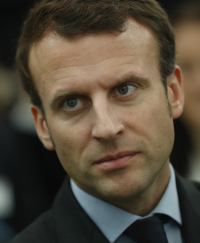
Macron: still green, but ambitious.
New War in Libya? – At the end of 2017, the young French president Emmanuel Macron announced a new “European Union and African Union Plan” to launch a “concrete military and policing action” – supposedly to rescue black African migrants ‘enslaved’ in Libya by human traffickers. This could be the first big coming out mission for the new Unified European Military Force, or EU Army, hitting this relatively soft target in north Africa. It would be a ‘carrot and stick’ approach, with not only boots on the ground, but also a program for ‘development’ and ‘outreach’. European Commission president Jean-Claude Juncker announced that Brussels has already developed “an external investment plan for Africa” with €44 billion (£39bn) by 2020. Meanwhile, no one in Europe will dare mention the collapse of the Libyan state, its terrorism and ‘warlordism’ crisis, and its human slavery issue – are all direct results of the French, UK and US roles in destroying the country in 2011. Will Brussels be able to establish its first military beachhead in Africa?
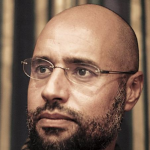
The Prodigal Son
Return of Gaddafi’s Son – He could be the one man who can unite war-torn Libya again, but will the West allow this heir apparent to come to power? In 2017, Saif al-Islam Gaddafi, the son of slain Libyan leader Muammar Gaddafi, was finally released from prison. Since his father Muammar Gaddafi was executed by NATO-backed terrorist gangs, a leadership vacuum was created whereby Libya has struggled to establish the rule of law. Thus far, his whereabouts are being kept secret, according to his lawyer, for “security reasons”. He has a European education and will be revered by the people as a familiar face in power, albeit, more moderate than his father. 2018 could be Saif’s real breakout year.
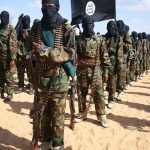 Somalia Partition? – After years of propping-up the al Qaeda affiliate in East Africa, al-Shabaab, western intelligence operatives will now have to switch from directing this asset as an asymmetric threat – to being an organization which, like ISIS, can hold territory and even reshape the country borders. This might possibly help US and British oil interests carve out some territory in Somalia’s oil-rich Puntland and Somaliland regions on the Horn of Africa. Seizing full control of this region would also give the US and UK axis powers full control over the Gulf of Aden – which is one of the main objectives of the Saudi-US-UK-UEA war against Yemen.
Somalia Partition? – After years of propping-up the al Qaeda affiliate in East Africa, al-Shabaab, western intelligence operatives will now have to switch from directing this asset as an asymmetric threat – to being an organization which, like ISIS, can hold territory and even reshape the country borders. This might possibly help US and British oil interests carve out some territory in Somalia’s oil-rich Puntland and Somaliland regions on the Horn of Africa. Seizing full control of this region would also give the US and UK axis powers full control over the Gulf of Aden – which is one of the main objectives of the Saudi-US-UK-UEA war against Yemen.
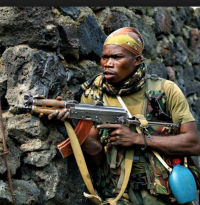 Africa Unrest – As US AFRICOM, the EU and NATO, along with Israel, continue to re-colonize Africa, a number of potential hot spots could go volatile this year. First up is the Republic of Congo, a former Belgian colony, which has not had a peaceful transition of power since independence from Belgium in 1960. The current President Joseph Kabila succeeded his assassinated father Laurent Kabila in 2001, but refused to step down at the end of his second term in December 2016. Now the country is being prepped with domestic unrest, as the government in Kinshasa has banned the Catholic Church and opposition groups from demonstrating in public – tempting bigger clashes in the future. A civil war here could trigger unrest and fighting in other countries. What makes this a key junction is that bordering the Congo are other potential flash points in Burundi, Rwanda, Central African Republic, Uganda, along with an already highly unstable CIA playground in South Sudan. Nearby there is also problematic situations in Burkina Faso and Cameroon. In 2017 we reported on tons of US procured weapons which were being smuggled by NATO member states into countries like the Congo – but in preparation for what? We’ll see soon enough. Beyond this, Ethiopia is also facing a serious economic crisis, as well as other ethnic unrest, which could trigger another chain of events that would eventually reverberate up to Europe – in the form of a new migrant crisis wave. Keep a close eye on Africa in 2018.
Africa Unrest – As US AFRICOM, the EU and NATO, along with Israel, continue to re-colonize Africa, a number of potential hot spots could go volatile this year. First up is the Republic of Congo, a former Belgian colony, which has not had a peaceful transition of power since independence from Belgium in 1960. The current President Joseph Kabila succeeded his assassinated father Laurent Kabila in 2001, but refused to step down at the end of his second term in December 2016. Now the country is being prepped with domestic unrest, as the government in Kinshasa has banned the Catholic Church and opposition groups from demonstrating in public – tempting bigger clashes in the future. A civil war here could trigger unrest and fighting in other countries. What makes this a key junction is that bordering the Congo are other potential flash points in Burundi, Rwanda, Central African Republic, Uganda, along with an already highly unstable CIA playground in South Sudan. Nearby there is also problematic situations in Burkina Faso and Cameroon. In 2017 we reported on tons of US procured weapons which were being smuggled by NATO member states into countries like the Congo – but in preparation for what? We’ll see soon enough. Beyond this, Ethiopia is also facing a serious economic crisis, as well as other ethnic unrest, which could trigger another chain of events that would eventually reverberate up to Europe – in the form of a new migrant crisis wave. Keep a close eye on Africa in 2018.
HOW ACCURATE WERE WE? TAKE A LOOKING BACK AT PREVIOUS YEARS…
THE BIG SHUFFLE: 2017 Trends and Predictions from 21WIRE
LOOKING AHEAD: 2016 Predictions and Trends from 21WIRE
GAME CHANGERS: 2015 Predictions and Trends from 21WIRE
SUPPORT 21WIRE – SUBSCRIBE & BECOME A MEMBER @21WIRE.TV
Source Article from http://21stcenturywire.com/2018/01/01/shake-bake-2018-trends-predictions-21wire/
Related posts:
Views: 0
 RSS Feed
RSS Feed

















 January 2nd, 2018
January 2nd, 2018  Awake Goy
Awake Goy 
 Posted in
Posted in  Tags:
Tags: 
















